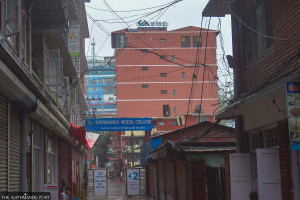World
China to build world’s largest hydropower dam in Tibet
The dam, which will be located in the lower reaches of the Yarlung Zangbo River, is estimated to produce 300 billion kilowatt-hours of electricity annually
Reuters
China has approved the construction of what will be the world’s largest hydropower dam, kicking off an ambitious project on the eastern rim of the Tibetan plateau that could affect millions downstream in India and Bangladesh.
The dam, which will be located in the lower reaches of the Yarlung Zangbo River, could produce 300 billion kilowatt-hours of electricity annually, according to an estimate provided by the Power Construction Corp of China in 2020.
That would more than triple the 88.2 billion kWh designed capacity of the Three Gorges Dam, currently the world’s largest, in central China.
The project will play a major role in meeting China’s carbon peaking and carbon neutrality goals, stimulate related industries such as engineering, and create jobs in Tibet, the official Xinhua news agency reported on Wednesday.
A section of the Yarlung Zangbo falls a dramatic 2,000 metres (6,561 feet) within a short span of 50 km (31 miles), offering huge hydropower potential as well as unique engineering challenges.
The outlay for building the dam, including engineering costs, is also expected to eclipse the Three Gorges dam, which cost 254.2 billion yuan($34.83 billion). This included the resettling of the 1.4 million people it displaced and was more than four times the initial estimate of 57 billion yuan.
Authorities have not indicated how many people the Tibet project would displace and how it would affect the local ecosystem, one of the richest and most diverse on the plateau.
But according to Chinese officials, hydropower projects in Tibet, which they say hold more than a third of China’s hydroelectric power potential, would not have a major impact on the environment or on downstream water supplies.
India and Bangladesh have nevertheless raised concerns about the dam, with the project potentially altering not only the local ecology but also the flow and course of the river downstream.
The Yarlung Zangbo becomes the Brahmaputra river as it leaves Tibet and flows south into India’s Arunachal Pradesh and Assam states and finally into Bangladesh.
China has already commenced hydropower generation on the upper reaches of the Yarlung Zangbo, which flows from the west to the east of Tibet. It is planning more projects upstream.
($1 = 7.2989 Chinese yuan renminbi)




 19.54°C Kathmandu
19.54°C Kathmandu














